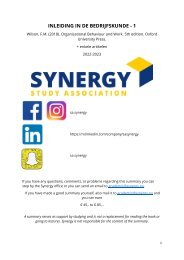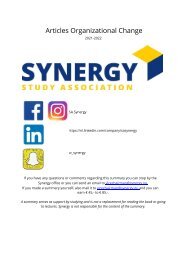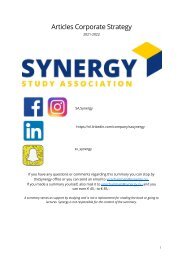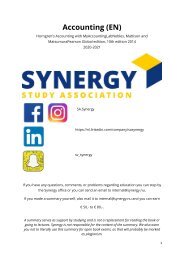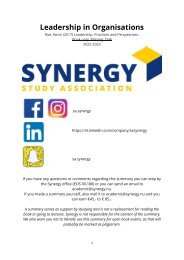Create successful ePaper yourself
Turn your PDF publications into a flip-book with our unique Google optimized e-Paper software.
comprehensive income items<br />
5. Treasury shares → generally, the amount of ordinary shares repurchased<br />
6. Non-controlling interest (minority interest) → a portion of the equity of subsidiaries not owned<br />
by the reporting company.<br />
Non-current liabilities are obligations that a company does not reasonably expect to liquidate<br />
within the longer of one year or the normal operating cycle. Companies classify non-current<br />
liabilities that mature within the current operating cycle or one year as current liabilities if<br />
payment of the obligation requires the use of current assets. Generally, non-current liabilities are<br />
of three types:<br />
1. Obligations arising from specific financing situations<br />
2. Obligations arising from the ordinary operations of the company<br />
3. Obligations that depend on the occurrence or non-occurrence of one or more future events to<br />
confirm the amount payable, or the payee, or the date payable.<br />
Current liabilities are the obligations that a company generally expects to settle in its normal<br />
operating cycle or one year, whichever is longer. This concept includes:<br />
1. Payables resulting from the acquisition of goods <strong>and</strong> services<br />
2. Collections received in advance for the delivery of goods or performance of services<br />
3. Other liabilities whose liquidation will take place within the operating cycle or one year.<br />
The excess of total current assets over total current liabilities is referred to as working capital.<br />
Working capital represents the net amount of a company’s relatively liquid resources. That is, it is<br />
the liquidity buffer available to meet the financial dem<strong>and</strong>s of the operating cycle.<br />
The account form lists assets, by sections, on the left side, <strong>and</strong> equity <strong>and</strong> liabilities, by sections,<br />
on the right side. The main disadvantage is the need for a sufficiently wide space in which to<br />
present the items side by side. Often, the account form requires two facing pages. To avoid this<br />
disadvantage, the report form lists the section one above the other, on the same page.<br />
The primary purpose of the statement of cash flows is to provide relevant information about the<br />
cash receipts <strong>and</strong> cash payments of an enterprise during a period. To achieve this purpose, the<br />
statement of cash flows reports the following: (1) the cash effects of operations during a period,<br />
(2) investing transactions, (3) financing transactions, <strong>and</strong> (4) the net increase or decrease in cash<br />
during the period.<br />
Companies classify cash receipts <strong>and</strong> cash payments during a period into three different activities<br />
in the statement of cash flows:<br />
1. Operating activities involve the cash effects of transactions that enter into the determination of<br />
net income<br />
2. Investing activities include making <strong>and</strong> collecting loans <strong>and</strong> acquiring <strong>and</strong> disposing of<br />
investments <strong>and</strong> property, plant <strong>and</strong> equipment<br />
3. Financing activities involve liability <strong>and</strong> equity items. They include (a) obtaining resources from<br />
owners <strong>and</strong> providing them with a return on their investment, <strong>and</strong> (b) borrowing money from<br />
creditors <strong>and</strong> repaying the amount borrowed.<br />
The statement’s value is that it helps users evaluate liquidity, solvency, <strong>and</strong> financial flexibility. As<br />
stated earlier, liquidity refers to the ‘’nearness to cash’’ of assets <strong>and</strong> liabilities. Solvency is the<br />
firm’s ability to pay its debts as they mature. <strong>Financial</strong> flexibility is a company’s ability to respond<br />
<strong>and</strong> adapt to financial adversity <strong>and</strong> unexpected needs <strong>and</strong> opportunities.<br />
Companies obtain the information to prepare the statement of cash flow from several sources:<br />
(1) comparative statements of financial position, (2) the current income statement, <strong>and</strong> (3)<br />
selected transaction data.<br />
Preparing the statement of cash flows from the sources involves four steps:<br />
14










